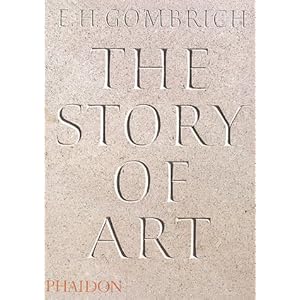After working through a number of histories of the art of photography, I increasingly realized that my knowledge of Art in general was pitiful and was hindering my understanding of some discussions as I could not truly appreciate references comparing photographic style or influence back to more classical art forms. Although this was more marked in reference to modern art movements such as Surrealism or Cubism, I felt the need to go to the beginning and read something of the History of Art.
For this I turned to a rather large and imposing volume, The Story of Art by EH Gombrich, with some trepidation. However, this was misplaced. I can truthfully say that I do not remember reading a historical treatise that was so enjoyable to read and at the same time highly informative. The book essentially steps through the major movements in primarily western art (with reference to other regions) from the earliest cave paintings through to Modern art of the 1980's, when the book was last revised. The book succeeds in part because it is well illustrated in colour with all of the works referred to in the text, meaning that any commentary can be immediately understood in the context of the work it refers to. He states that this approach necessarily reduces the scope of the book, but as an introductory text it was broad enough for my needs.
Prior to reading this volume I was aware of the famous artists and some of their work, but not how they fit into a historical context or how they influenced or even reacted against each others work. Whilst I found the whole work of interest two key threads resonated with me as a photographer. The first was the development of the science and visualization of perspective, something we almost take for granted, but which is also very difficult to control using a camera. It was not only the mathematical aspect that drew my attention, but also the control of depth in painting using techniques that depend upon the way the human mind understands the near and the far. Far away objects are blurred, softer in tone, slightly tinted towards blue, near objects are sharp, bold in colour, and warmer. The techniques that landscape photographers use to drive depth into a flat frame, often accentuated at the early hour that most photographs are taken is very much playing on an aesthetic developed by Renaissance painters to solve specific representational challenges. As this is now understood by the general public as artistically correct, such photographs are seen as attractive.
The second was the progressive desire to understand how light works and in particular how colour influences our view of the world. Early medieval painters in the Gothic style frequently painted with very strong vibrant colours, showing richly dressed individuals against a gold leaf background, always ecclesiastical work, but designed not to reflect any sort of reality, but to project the glory of heaven to the sinner. As the Renaissance arrived colour slowly muted and became more "realistic", but was not well understood. Although shading to produce 3 dimensional forms was exquisite, particular Leonardo's sfumato, artists did not really use light. As the Baroque came along suddenly there seemed to be a transformation and artists such as Rubens and Rembrandt increasingly placed figures in rooms with one or two point light sources, experimenting with the play of light on figures. The impressionists, however, were the first to really look at light itself, rather than its modeling effect, and understand that shadows have a colour other than shades of grey, they can be warm or cold - in effect they solved the white balance problem of painting. Finally the moderns in some case abandoned representational forms entirely and moved to explore abstract structures of colour and texture.
In my current work, I find myself on a similar journey, trying to understand both perspective and colour, sometimes together, sometimes separately. I still reject (in my work) a move to monochrome, colour is a strong part of my passion in life, I cannot yet see a reason to lose it. However, I am open minded, so am very much looking forward to the next few exercises.
I am also reading a small book alongside this one, called isms, still trying to understand postmodernism in the context of art and photography. I can understand postmodernist architecture and why it came about as people demanded some decoration on the minimalist buildings of the Bauhaus and other modernist movements, however, in photography I am still thinking about this topic.

No comments:
Post a Comment